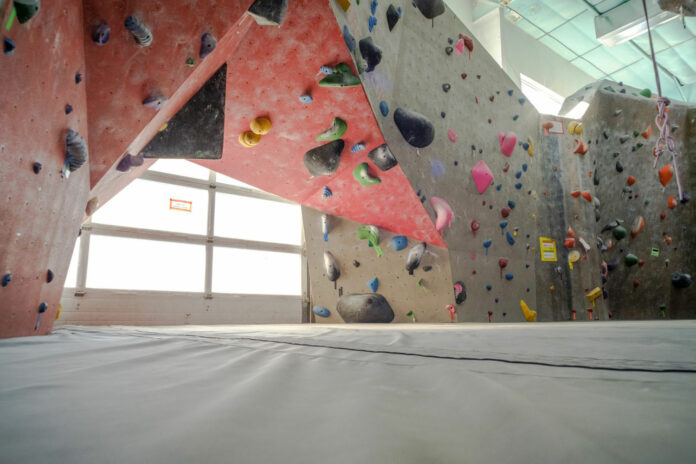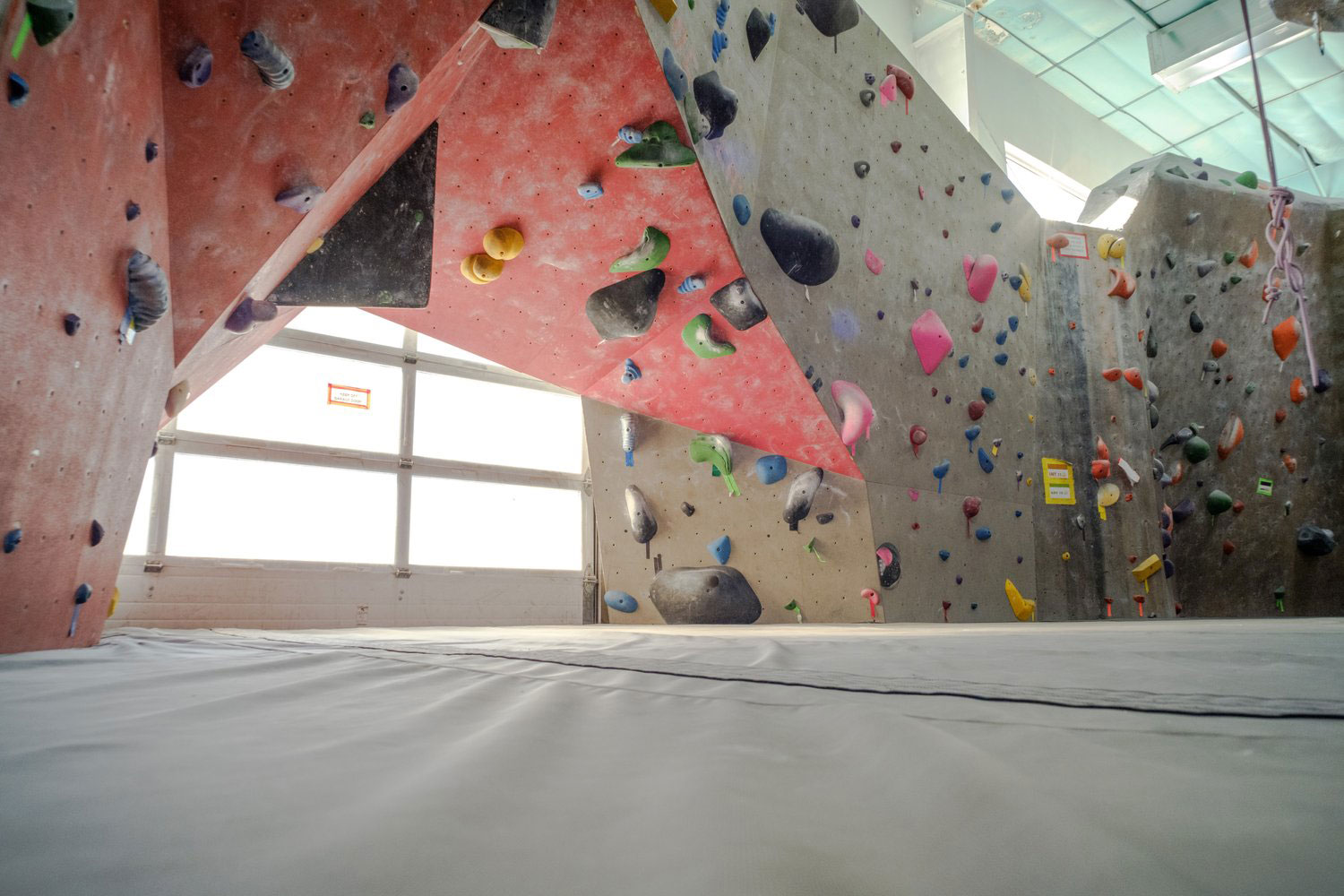
The concept of more equitable pricing structures has long been part of the climbing gym industry in North America. Discounts for students and seniors have existed since the first U.S. climbing gyms opened in the 80s and 90s, scholarships have expanded access to youth teams and summer camps for decades, and more recently general gym membership scholarships as well as sliding scale memberships have become almost commonplace components of EDI initiatives around the country. But arguably the most radical expression of more equitable pricing in the industry today is the pay what you can model (also referred to as “pay what you will,” “pay what you want,” or sometimes “optional pay”).
When hearing the term “pay what you can,” if you’re like me then your mind immediately goes to Memphis Rox—and with reason. Founded in 2018 as a nonprofit climbing gym―one of only a handful in the entire country―Memphis Rox’s unique pay what you can model and the impact of the staff’s work in the Memphis community have catapulted the nonprofit gym to near stardom in the climbing world practically from the get-go. Yet it’s no secret that running a nonprofit gym can be costly, and an unanswered question for the hundreds of existing for-profit gyms has been, “Can this work at my gym?”
Fast forward to the summer of 2020, when one climbing gym operator began experimenting with an answer to that very question. Boulders Climbing Gym, a two-gym chain in Madison, Wisconsin, first started offering a pay what you will membership option to local community organizers doing critical unpaid work in the background of that year’s protests. Since then, Boulders’ pay what you will model has blossomed into a whole not-for-profit entity called Climb4Community (abbreviated in this article as C4C, but not to be confused with Climbing For Change), an EDI initiative comprising a network of pay what you will programs, affinity groups, and additional EDI efforts―all structured to be self-sustaining and applicable at other for-profit gyms. Already, in 2021, The Pad Climbing became the first gym chain to adopt its own version of the C4C initiative, and more for-profit gym partners may soon be on the way.
In catching up with the operators of Boulders and The Pad, several takeaways stood out that we wanted to share with you, as you consider trying something similar at your gym. Below are seven “dos and don’ts” for getting started with pay what you can pricing at for-profit gyms.

1. Do Incentivize Buy In
In its simplest form, a pay what you can membership consists of just that: climbers paying more or paying less for a gym membership depending on how much they can afford to pay. At its core, the goal of such a membership is to expand gym access to climbers who would otherwise be excluded by a gym’s standard membership price. The trick, of course, is keeping the books balanced.
It’s no secret that Memphis Rox started with a multi-million-dollar donation from founder Tom Shadyac, a Hollywood movie director, which reduced the gym’s ongoing operating costs. And as a nonprofit gym, tax-deductible donations help offset the remaining balance. “We don’t have a mortgage, construction loans, or investors to repay. These are huge monthly operational expenses of commercial climbing gyms that we are not dealing with,” Memphis Rox’s Operations Director, Jon Hawk, told CBJ in 2019.
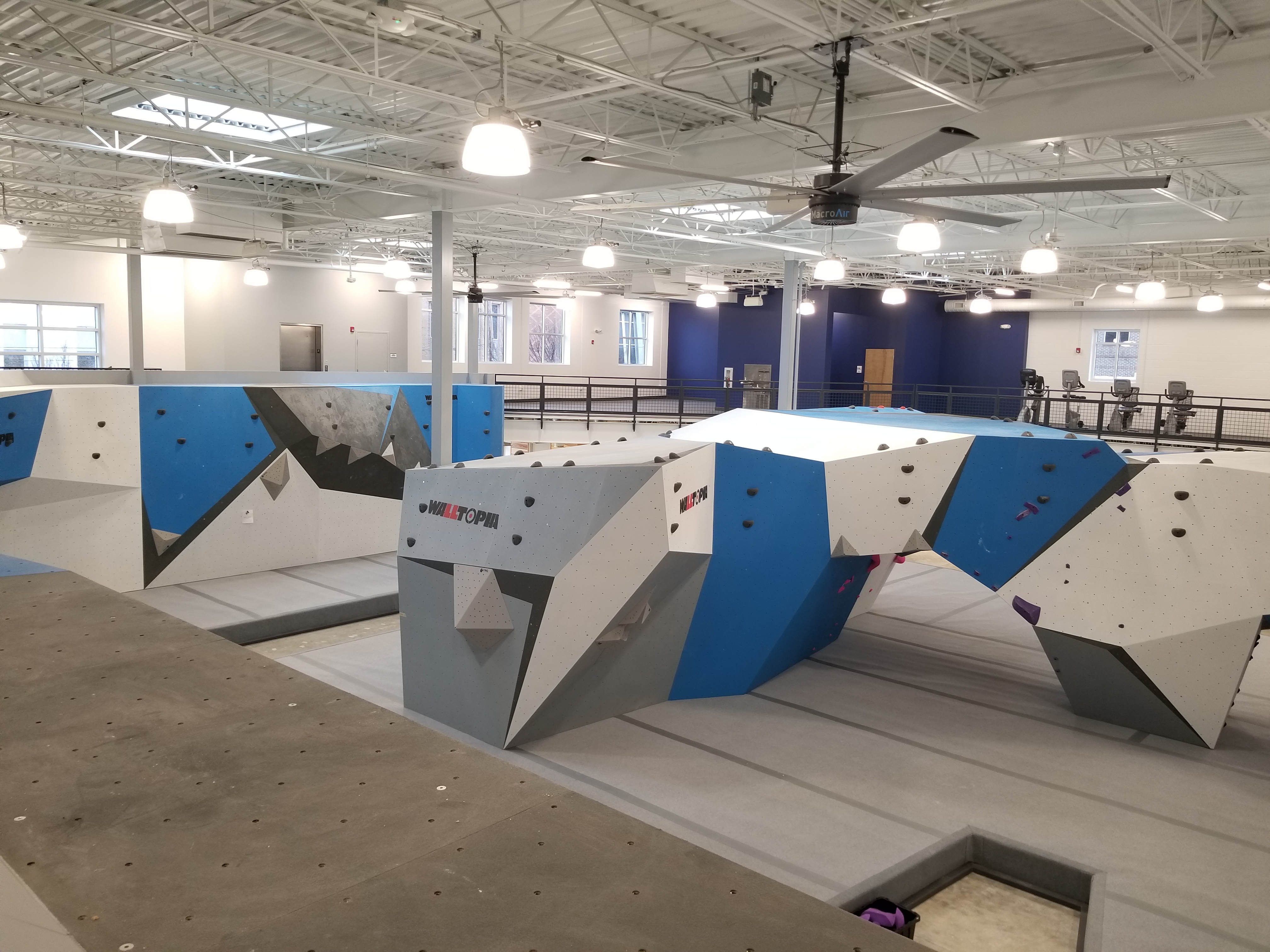
As a for-profit gym with higher operating costs, getting buy in from climbers who will pay more than a gym’s standard membership rate becomes even more important. At Boulders, part of incentivizing that buy in has meant making their C4C membership the very best membership at the gym. “The secret to this initiative is that it’s actually a premium membership for the bulk of our members, with better benefits and exclusive SWAG and events,” says Brad Werntz, the founder and President of Boulders.
Whether paying more or less than the gym’s standard membership price of $89 per month, all C4C members at Boulders get the standard membership benefits―access to Boulders’ two locations, 10% off pro shop purchases, 50% off most classes and private instruction, etc.―plus unlimited free first-timer guest passes, more monthly guest passes, unlimited free rentals (for guests too), an extra 10% discount in the pro shop, free C4C gear, a free class, and discounted day passes at participating C4C gyms.
The results speak for themselves. “Over 10% of our members are now C4C members, with the vast majority of them paying more for their membership than less,” says Werntz. “The program is already beyond self-sustaining—it’s improved our profitability and raised our average membership rates.”

2. Do Prioritize a Humanizing, Holistic Approach
Extending premium benefits to all C4C members, not just those paying more than the standard rate, was not a decision taken lightly. Rather, this strategy was one part of the Boulder team’s effort to prioritize a more humanizing approach than what they’d seen certain gym scholarship programs adopt.
“The downfall of many ‘scholarship’ programs is that no one wants to wear a t-shirt that says, ‘I paid less/nothing to be here,’” Werntz says. “With C4C, it’s just the opposite: Most C4C members pay more, so there’s a cachet (not a stigma) associated with people having a gym membership this way, and this status transfers to folx who otherwise would’ve been highly marginalized and ‘othered.’”
Bringing in more money through the pay what you can model does come with a social responsibility to redistribute those funds in the same spirit that brought them in. Ultimately, more equitable pricing should be only one part of a holistic approach to making a gym space more inclusive; other EDI programs are essential to that goal as well, and that’s why any profits from Boulders’ C4C membership are earmarked for donations to local affinity groups and affinity group night discounts ($10 for a day pass instead of $20) at the gym.
“If you’re queer and you’re black and you’re female, you can come to Queer Climbing Social, Madison Women Climbers and Madison Climbers of Color, and then we also have weekly Fem Plus nights,” says Werntz, who makes a point to reinvest any profits from these climbing nights back into the affinity groups and other C4C programming, as well. “Our memberships cost a lot because of the real estate size of our gyms, and yet we have these kinds of pathways that, if people are creative, they can get into the gym and get their needs met climbing and not feel rejected because we have higher rates.”
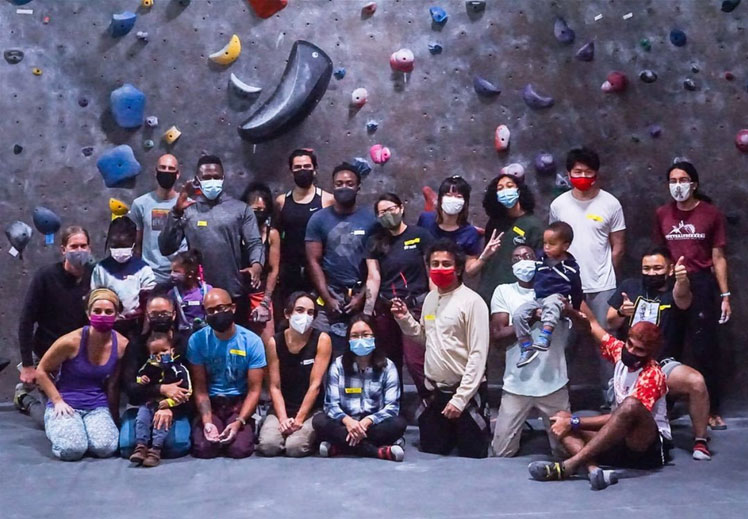
3. Don’t Make It Only About the Consumer
At any for-profit or non-profit business, it’s possible to get caught up in the mission you’re trying to accomplish and overlook the work environment for the people who are essential to getting there. There’s truth to the idiom “the ends don’t justify the means,” and that idea can be applied to pay what you can memberships. Climbing gym businesses don’t just provide a service to climbers; they are also spaces of work, and the conditions of and compensation for that labor is part of the equation here.
At The Pad, that factor has meant including gym staff in C4C membership discussions before applying changes, and reprioritizing work hours so that employees aren’t overworked. “Our goal is to make sure we profit even with all our philanthropy, as goal number one. My team and their departments deserve every dollar that goes to them,” says Kristin Horowitz, The Pad’s founder and CEO. “My team had to be open to me asking for their help and enthusiastic buy in, since they do the bulk of the selling of this program. But they did, and so far, it has not disappointed any of us.”
From phone calls to marketing, there can be a lot of on-the-ground work that goes into making the C4C membership successful. “Our marketing team did a beautiful job putting together visuals on the website and dropping the information into all our touch points,” Horowitz says. “Our front desk crew, as well, have to understand and love the program, and bring it up during their conversation with members and visitors.”
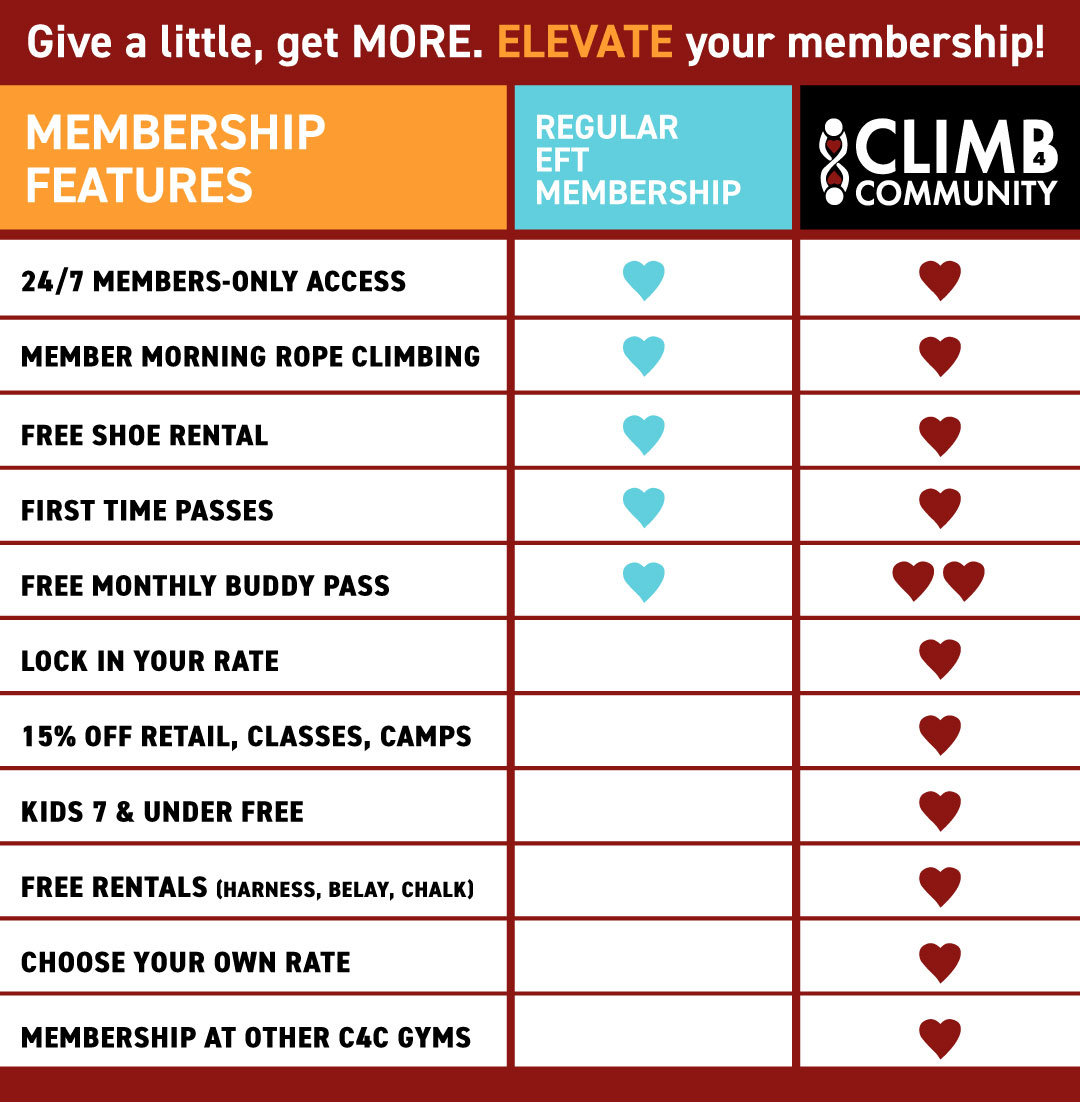
At Boulders, hiring a dedicated employee with roots in the local community to focus specifically on facilitating the C4C initiative has been beneficial since day one. That person is Margo Keevil, the Community Director at Boulders. Keevil is from the Madison area and has been instrumental in getting the gym’s initial mutual aid membership of 2020 off the ground, connecting with the Memphis Rox team to iron out some of the C4C membership details, and managing all the applications that come through.
“Our very first C4C members were dear friends of mine who were doing organizing work in that era and are still members and still climbing to this day,” says Keevil. “And then, ultimately, we were able to open it up to this wider audience, which had been the vision that Brad [Werntz] had had for a long time. He was talking about C4C-esk stuff since I was a kid on the team way back in the day.”
4. Do Create a Safe Space for Signing Up
One hesitation to trying a pay what you can pricing structure might be a worry that people will take advantage of the system. Or it may be tempting to build in safeguards like requiring proof of income that’s below federal poverty lines for members paying below the standard membership rate. Boulders and The Pad, however, have found trading this red tape with a trust-based system to be more effective.
“The principles of C4C assume that those in need will ask and be respected in response without invasion of privacy or having to prove need to us, and it assumes something we have learned about people over the decades, which is that those with means are happy to share to enable others if asked, as well,” says Horowitz.
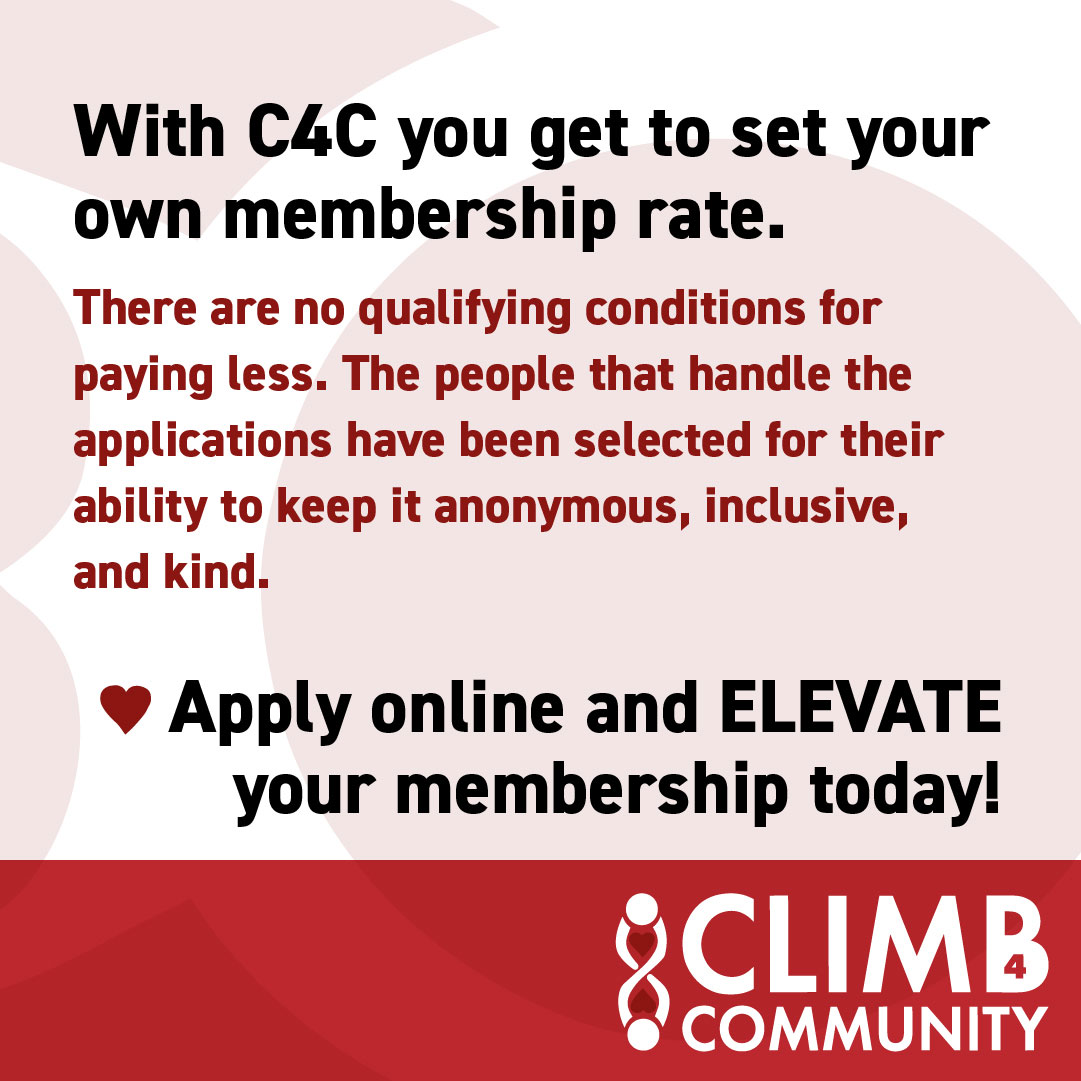
At The Pad, new C4C applicants fill out a simple, confidential form that asks for basic contact info, a little about themselves and why they are applying, how much they wish to pay, and if they qualify for government assistance or volunteer with a partner program (not required). From there, applications are either automatically approved or applicants are asked by email to clarify their situation. “The most important piece to me is the trust aspect. We no longer are asking people to prove their qualifying poverty level, and it takes away the financial aspect,” says Horowitz.
Boulders makes sure to have a phone conversation with each applicant, and Keevil handles most of those calls. “We believe that, if people are feeling stretched and might be in a position where they’re going to lie to us about their finances, it’s harder to do that if you’re talking to someone whose name you know, who you’ve built a relationship with,” Keevil says.
Creating safe spaces for those hard conversations matters too. “I go into all of those calls assuming that people are already doing their best and trying hard and want to climb, and that they are putting in effort and overcoming a hurdle just to fill out the application,” says Keevil. “Even though they’re not paying extra financially, they’re doing additional labor in order to access our space, and we want to value that. It’s harder to be here when you’re the only person in the room that you feel like you identify with.”
Only when paying below $40 per month at Boulders and $45 per month at The Pad are C4C applicants asked to show some form of community engagement—which is kept flexible on purpose, since members paying below the standard rate are often already doing unrecognized mutual aid work in their families and communities—in order to maintain the relationship. “Every part of our membership process expects that people will be honest and will be able to self-regulate their finances,” adds Werntz. “So far, we’ve found that model to be incredibly successful, with some folks even returning to increase their membership dues after securing new employment. Trust and open avenues for communication go a long way in community building.”

5. Do Know Your Capacity and Market
Still, every climbing gym and community is unique, and it’s important to note a couple contextual caveats that may have contributed to the C4C membership’s success at Boulders and expansion to The Pad. Both gym chains, for starters, were looking to add more members and had room to do so.
“The period directly after beginning this program, we saw the longest sustained membership growth in the history of Boulders. Over 95% of our C4C members who are paying less than normal were not already members prior to their application,” says Werntz.
The Pad, which operates gyms in California and Nevada, was able to welcome more climbers as well. “I have 500+ people between both gyms that weren’t members who decided to join at a lower rate,” says Horowitz. “That’s revenue we wouldn’t otherwise capture.”
Keevil echoed that sentiment. “We’re sort of in a unique position as climbing gyms in that the thing we’re selling, unless we’re hitting capacity, doesn’t really have an inventory,” says Keevil. “If we were going to get nothing from somebody, and now we’re going to get $50 or $70 a month, you can think of it as a loss or you can think of it as $50 or $70 more a month that we wouldn’t have had otherwise.”
Additionally, both Boulders and The Pad had gyms with established gym communities who were no strangers to EDI initiatives. Before shifting to a for-profit model, The Pad SLO was the first nonprofit bouldering gym in the U.S. and had long experimented with equitable pricing initiatives—such as sliding scale memberships and free memberships for volunteers at community partner organizations—which made shifting to the C4C membership a smoother transition. “We have 20 years of a trust-based space (including piloting 24/7 gyms) that literally gave away memberships to those who couldn’t afford it,” Horowitz says. “We carried that value system into the for-profit world, and really like the intent and direction C4C has taken it.”
Boulders, for its part, first opened its Eastside location back in 1996. Werntz had observed other EDI initiatives at Boulders over the years and was confident the C4C initiative would receive support from members willing to pay above the standard rate. “We have a very affluent and politically active customer base, and so we are definitely getting the benefit from people who are inclined to support this program who are already big fans of our gym,” Werntz says. “We’re interested to see how this works in other markets—some larger markets, some smaller markets, some bright red markets, some bright blue markets—to figure out if there’s a common element.”
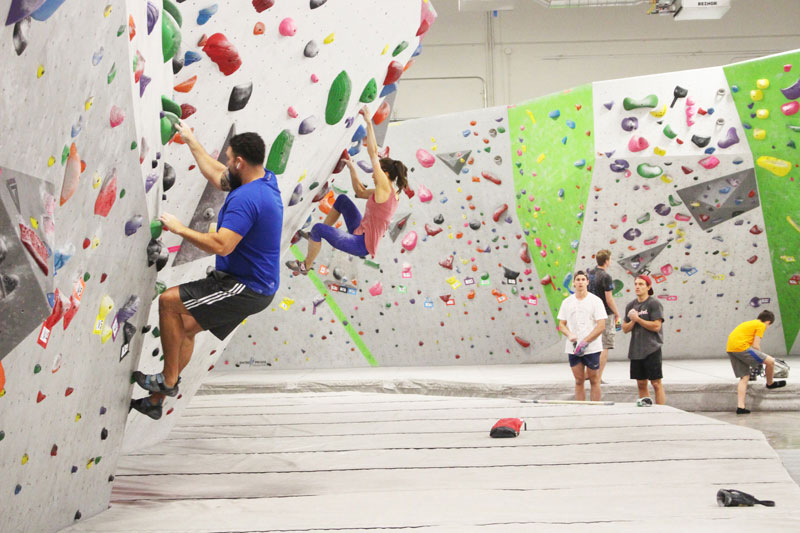
6. Don’t Forget the Bigger Picture
For now, determining whether there is that common element requires further testing, so it’s important to note that pay what you can pricing at for-profit gyms remains an experiment. Currently at The Pad, for instance, there are significantly more C4C members paying below the standard membership rate than above it. Horowitz, however, is pleased with the initial results regardless. “Right now, success for C4C at The Pad means more people who need equity and access getting it and those who care about their community being able to support that,” Horowitz says. The Pad partners with several local organizations, and some of the members of these community groups who have been accessing the gyms through the C4C membership include “at-risk/foster youth” and “individuals without access or proximity due to cost or culture,” per The Pad’s website.
Even if the initiative is not self-sustaining straightaway, there is still therefore immeasurable value in having a pay what you can membership from an equity, diversity and inclusion perspective that’s worth backing. “We really feel that all of our C4C members are bringing something extra into the gym, whether that’s directly through their funding or bringing a different demographic that we haven’t had in the gym before, which is valuable for all sorts of other reasons,” says Keevil. “Even just walking in the door, as someone who hasn’t historically had access to these spaces, is adding something premium to the gym.”
For gyms not seeing a profit right away, one impulse might be to put a cap on the number of members paying below the standard rate and implement a wait list. Werntz, however, advises against doing so, encouraging gyms to find new ways of tapping into the generosity of their community members instead.
“In terms of the cap, we would just use that as an opportunity to market the program, not as a wait list for a [gym membership] scholarship. Personally, I think that a wait list for a scholarship is dehumanizing and othering. It’s not going to create sticky members who are happy to be here,” says Werntz. “It’s really just a question of whether you have an abundance or a scarcity model, and we’ve chosen to build this from an abundance model.”
That abundance model can be applied at an industry level, too. Although it’s more of a pie in the sky right now, Werntz isn’t against the idea of a profit-sharing model down the road, where a C4C partner gym seeing positive returns in one market could support the C4C program at a partner gym seeing negative returns in another market. “We’ve thought about that, and that’s one reason why we set it up as a separate not-for-profit,” says Werntz. “We designed Climb4Community to be an open-source effort in the hopes that other gyms would want to adopt it. It’s a standalone entity, and not part of our business model.”
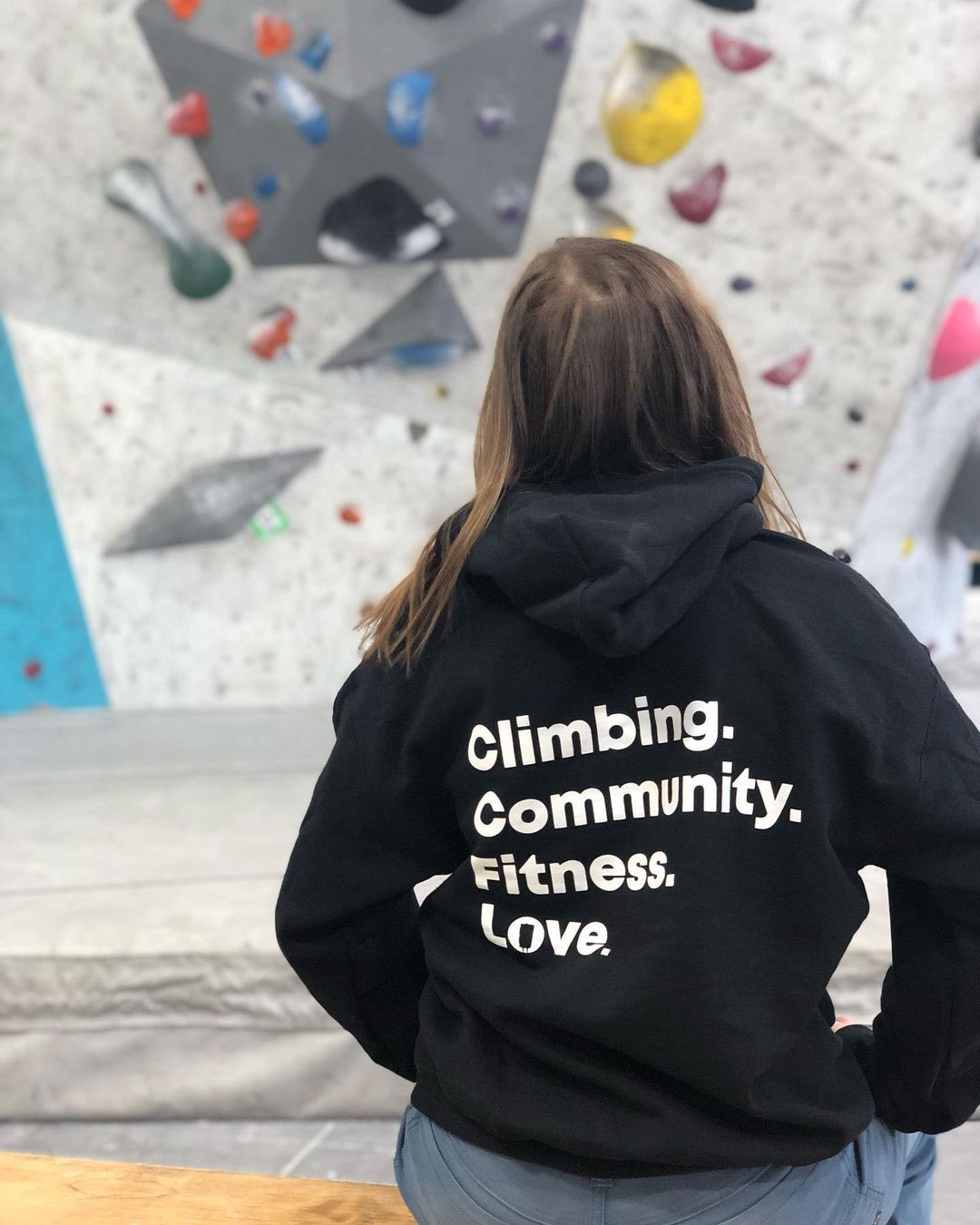
7. Don’t Be Afraid to Ask for Help
For the moment, though, the focus at C4C is on increasing the initiative’s sample size in partnering with more gyms. (Werntz is looking for up to ten beta gym partners.) If you are a gym operator interested in trying a pay what you can membership at your gym, remember that you don’t have to do it alone. Cliché or not, we’re stronger together, and there’s efficiency to be gained by not reinventing the wheel.
“By partnering up with other gyms, we hope to both incentivize the investment in implementing these programs, and provide enough resources to make the implementation process more efficient and thus the programs more sustainable for a wider range of business models,” Werntz says. “A new gym upon joining our initiative can expect to be handed step-by-step instructions for implementation of any of our various programs or initiatives, along with pre-written copy, other promotional materials, and all of the tips and tricks we’ve learned through the last few years of trial and error.”
Also in the works at C4C is a partnership with the climbing gym management software company Approach, which would help C4C partner gyms using the Approach software to more easily implement the C4C program on the back end. “We’re trying to make this as frictionless as possible for gyms who want to adopt it, but also for consumers who want to use it,” says Werntz.
With all the success of the C4C experiment thus far and with more developments on the way, it’s fair to wonder whether pay what you can memberships will one day become more mainstream than anomaly. “We essentially want to make it easy enough that it doesn’t make sense not to do it, you know what I mean?” says Keevil. “Like, ‘Why wouldn’t I do this?’”

Joe Robinson has been working in the climbing industry for over a decade and currently manages CBJ editorial. He traveled the world as the IFSC’s community manager during Olympic inclusion and across the U.S. while writing for Alpinist, Climberism, DPM and CBJ. He also worked in local climbing gyms of the Pacific Northwest and West Michigan while advancing economic empowerment, educational equity, youth development and diversity programs of national nonprofit organizations.



